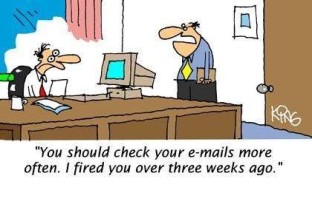One of the responsibilities of an employee in my current company is to fill out a task assignment reporting sheet. He or she simply indicates the amount of hours (can be broken up into quarters and halves) spent on a particular activity for that day.
But I am curious as to what percentage of employees are actually fulfilling this responsibility. They might reason that they are already doing a lot of work, and this is just added load, without any value to a project they are working on.
At first, this was also my initial reaction. But after doing it for several months, I believe it has helped me focus and prioritize on the tasks that I need to get done for that day. If new tasks arise or spring out of nowhere, I put them at the bottom of the queue unless they are really really important. The tasks I have set early in the day will always have top priority otherwise.
This activity has also helped me in estimating the actual hours spent by resources on a project. I now have a more accurate idea on how long a particular task will take compared to when I was starting out in the company. “Having some idea as basis is better than having no idea”.
I also had a dilemma regarding the analysis of overutilized and underutilized resources. One resource can be assigned to only one project with gigantic scope while the other resource can be assigned to many projects of miniscule scope. But on paper, the one with many projects being handled might impulsively be seen as “the better man”. A coworker suggested that it might be best to observe the entries in both person’s T.A.R. sheets. If one was working beyond overtime and the tasks seem to support this need for extra hours, then that person might be an overutilized resource. The opposite would indicate a possible underutilized resource. If necessary, feedback from peers can verify if all these activities are a reflection of the effort being put by an employee on his or her projects.
This reminds me of an episode in Star Trek: The Next Generation. The crew of the Enterprise were able to find Mr. Scott, the chief engineer of Kirk’s Enterprise. Geordi and Scott were having a discussion. Scott asks La Forge something like “If the captain asks you how long a task would take, do you tell him the truth“, and La Forge says “Of course”. Scott then exclaims “How in the world will you ever be seen as a Miracle Worker!!?“. It’s too bad humanity has to reach the 24th century before employees work truthfully and efficiently =) The change can start in our generation if we are critical of the ideas passed on by the old.
